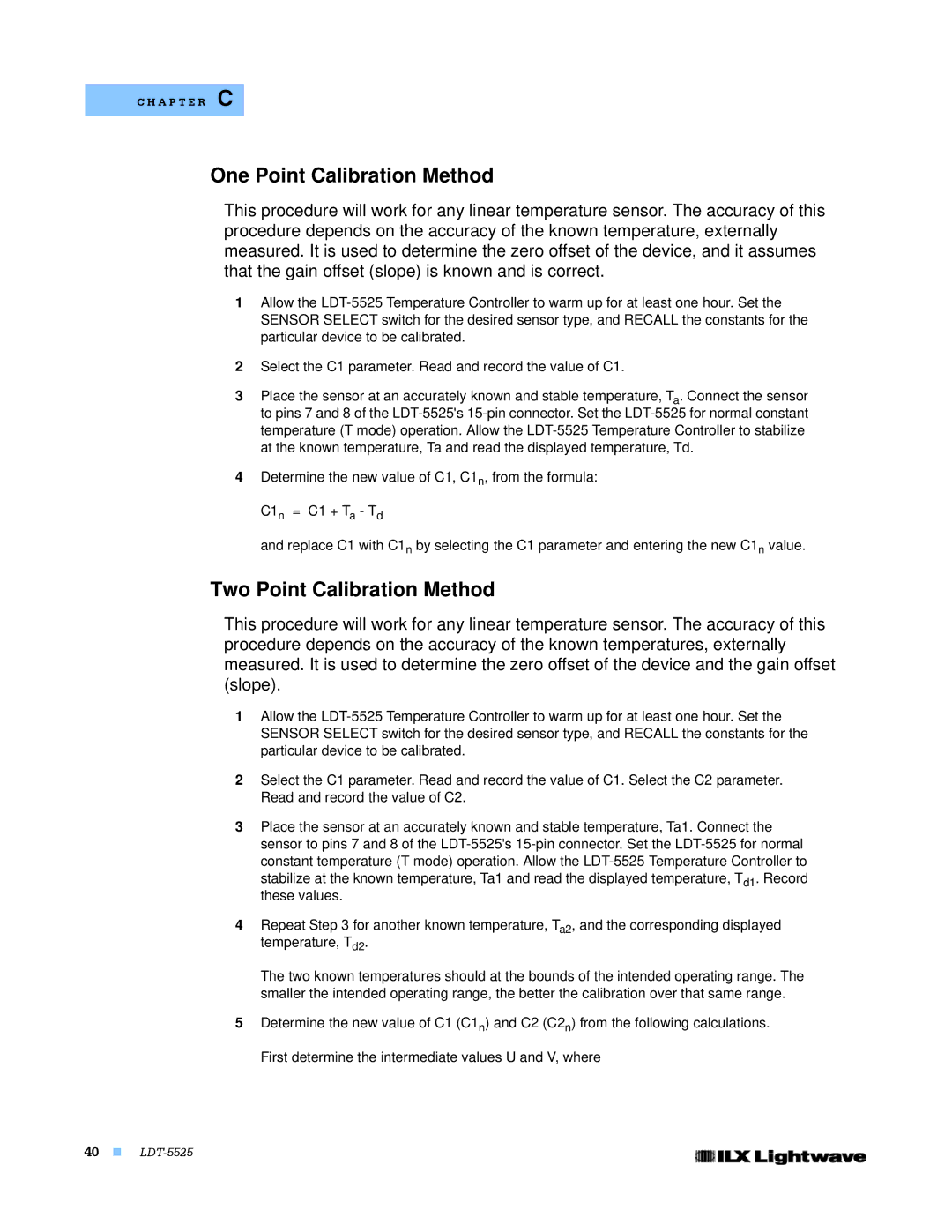
C H A P T E R C
One Point Calibration Method
This procedure will work for any linear temperature sensor. The accuracy of this procedure depends on the accuracy of the known temperature, externally measured. It is used to determine the zero offset of the device, and it assumes that the gain offset (slope) is known and is correct.
1Allow the
2Select the C1 parameter. Read and record the value of C1.
3Place the sensor at an accurately known and stable temperature, Ta. Connect the sensor to pins 7 and 8 of the
4Determine the new value of C1, C1n, from the formula:
C1n = C1 + Ta - Td
and replace C1 with C1n by selecting the C1 parameter and entering the new C1n value.
Two Point Calibration Method
This procedure will work for any linear temperature sensor. The accuracy of this procedure depends on the accuracy of the known temperatures, externally measured. It is used to determine the zero offset of the device and the gain offset (slope).
1Allow the
2Select the C1 parameter. Read and record the value of C1. Select the C2 parameter. Read and record the value of C2.
3Place the sensor at an accurately known and stable temperature, Ta1. Connect the sensor to pins 7 and 8 of the
4Repeat Step 3 for another known temperature, Ta2, and the corresponding displayed temperature, Td2.
The two known temperatures should at the bounds of the intended operating range. The smaller the intended operating range, the better the calibration over that same range.
5Determine the new value of C1 (C1n) and C2 (C2n) from the following calculations. First determine the intermediate values U and V, where
